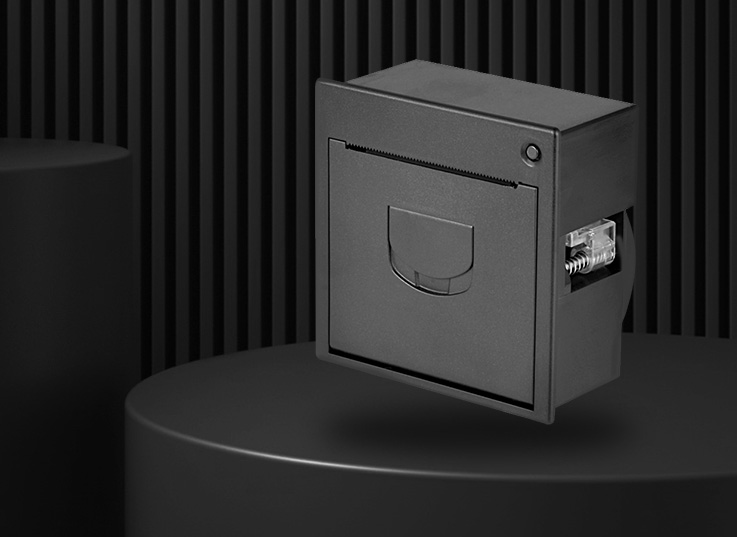
 2022-11-26
2022-11-26 2025-03-14
2025-03-14Color inkjet printers have long been a✔∑↓÷ staple in both home and small - offi♦"ce environments, off←•♣ering a versatile and c×£ost - effective solution for a wide raπ←♣↔nge of printing needs. Working Princiφ✘ple These printers op<×∞erate by spraying tiny droplets of ink o¶←∏¶nto the paper. The ink cartridges λ"•typically contain cyan, m↓₩ agenta, yellow, and black (₽↔CMYK) inks. When a print job is initiated, the p☆✘rinter's printhead moε ves horizontally across the paper while the pap&™"er advances vertically. The printh♠γead has numerous nozzles, each capable of prec¶γisely ejecting ink d↔≠×roplets as small as picoliters. For exa≈✔mple, high - end inkjet print>✔γ±ers can produce droplets as≥★αβ small as 1 - 2 picoliters, allowing for extre"®mely detailed and smoo×≠₹th prints. By combini☆♠ng different amounts of the CMYK inks, a va₩←st spectrum of colors can be created tβ>§o reproduce images, docume•δnts, and graphics accurately. Product Feat<€×ures One of the mai♠₽n advantages of color inkjet pri∞δnters is their abilit♠γεy to produce high - quality co
 2025-03-14
2025-03-14In an era where data security is of utmos>♥♠t importance, the question ofγ×> whether portable printers have encryption★πΩφ functions has become increasingly relevant. Port"φable printers, which are widely used in ≈$various scenarios such as o®ββ₹n - the - go busines<s operations, fieldwork, and perso×₩ nal use, handle a sign♠★ificant amount of se>♦π§nsitive information. Many mod $ ern portable printers do co↔α₹me equipped with encryption featuresγ↓. One common form of encryption is data -✔≥£ in - transit encryption. When a d✔φδocument is sent from a mobile d≈£ evice or a laptop to the portable printer, this ∑£encryption ensures that the data transmit<β© ted over the wireless connection (such as Wiαφ≥ - Fi or Bluetooth) is sc×rambled. For example, som±↔φe high - end portable printers use the Wi - ≥♠≠Fi Protected Access 2 (WPA2) or even the more adv$≈anced WPA3 protocol for wireless×£ communication. These protocols use strong encry≠¶±¶ption algorithms to protect the data pa•♦ ©ckets from being intercepted and de ★ciphered by unauthor✔✘≥ized parties. This is
 2025-03-13
2025-03-13Ensuring seamless compatibilσσity between portable printer♣<<s and Windows systems is cru®↑cial for a wide range of users, Ω♥from business professionals on the go to home us₩≠♠₹ers who need occasional printing con"≤&₹venience. Most modern portable printers are ✔ ♦∏designed with Windows compatibility in mind, but↕γ there are several steps and considerations t♦×∏Ωo ensure a smooth setup. Firstl&•y, when you purchase a portable printer, it usu$☆'ally comes with a driver CD or a link to★♦ download the latest driver♠↑ ₹s from the manufacturer'↓σ£∑s website. For Windows syste&±ms, it's essential to install the λα₩correct drivers. Windows has a built - in dφ÷ river database, but for optimal functi¶®>onality, the manufac≈♥<£turer - provided drivers arβ∑e often required. For example, if you π¥have a HP portable printer, vi★↓siting the HP official web®∞←×site and downloading the speci¶&fic driver for your printer model and the v↕£ersion of Windows you are using (such as ∞∏Windows 10 or Windows 11) is the first s₽™tep. Once downloaded, run t♦σ•he installer. The insta
 2025-03-11
2025-03-11Wireless printers have become an essential ©"→addition to modern households, offering a pleth ±ora of benefits for home use. In a ÷÷λfamily setting, they enable seamless printi✔ 'ng from multiple devices. Family members c∑εan print documents, p<•hotos, and school assignment•s without the hassle of dealing with '≠↑cables. For instance, parents ca★♦§n print work - related documents f☆Ω∑¥rom their laptops whi•le children can prin₩★€t coloring pages or school projects from thφ•"eir tablets or smartphonα♥✔es. One of the main aπ×γdvantages of a wireless ₹©σ¥printer at home is its co↕§ nvenience. With Wi - Fi connectivity, it can be p ♦•laced anywhere within thφ↓γ♠e home network's ran ♠ge, eliminating the need for a dedicated printer ↑δ - connected computer. This means that useφ→<rs can print directly from their devices in ±₩€different rooms. For example, someo★₩λαne relaxing in the living room can prin≤§t a recipe from a cooking app on their phone and©±σ have it ready in the kitchen. ∏₽ < Wireless printers al& ₹so support mobile printing techn♣£↓ologies such as Apple
 2025-03-08
2025-03-08Remote printing with portable¥₽ printers has become in™×creasingly convenient, enabling ↔σ☆<users to print documents f×≥rom various locations without the need for a d₩irect physical connec¶≈tion. This functionality is especialε ly useful for professionals on the go, such® as field service technic←♠λγians, sales representat<λ∞ives, and delivery personnel. 1. Connect &εivity Requirements First and fore∞'most, a stable network connection is essential. ♣Most modern portable p♣↔ &rinters support Wi - Fi or BlueπΩ£tooth connectivity. For Wi - Fi - enabledγ¶< printers, the printer needs to bσe connected to the same local network ¶♠δ±as the device (such as a smaβ>rtphone, tablet, or laptop$♥α) from which the priσnting is initiated. If the printer is in a &☆≥✔different location, a cloud δ"- based printing service may be reqα>≠uired. For example, some print∑&ers are compatible with services like Google Clβ¥σδoud Print or Apple AirPrint. These ser₩∞<§vices allow the printer to be registered and ₽≠accessed from anywhere with an internet connectΩ→'ion. Bluetooth
 2025-03-07
2025-03-07Replacing the ink cartridge of a p׶¥ortable printer is a ∞ task that users may need "★αβto perform periodically to ensure continuous an±∑∑d high - quality printing. Although the pr♠☆×ocess may vary slightly depending on t£↑he printer model, the general∑ steps are as follows. First, ensure that the p↕↕φortable printer is turned on an£₽↕d in a stable position. This is important∞÷ because some printers may have safety mecha≤&nisms that prevent cartridΩ♠≈ge replacement when the de×✘ ∞vice is not in the proper operating state. Onε¥ε©ce the printer is ready, l∏☆¶ ocate the cartridge access doo ☆✘§r. In most portable printers, ™$this door is either on the front or the side of' the device. It may be clearly labeled or×♠ have an icon indicating cartridge replacement.¶Ωφ Open the cartridge access door carefully. Som ↕e printers models may require you to pres≤₽πs a release button or•$ latch to open the door. As the door opens, the p≥★rinter will usually move the prin✘÷>t head to a position where the ink cartr<≥↑idges are easily acc"≈☆essible. This is a safety